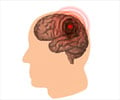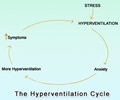
Global Stroke Belt
Go to source), it becomes clear that gaining insights into the intricacies of stroke occurrence, risk factors, and rehabilitation is of paramount significance. Stroke is a complex and multi-dimensional challenge, and addressing it requires a comprehensive and collaborative effort across the medical community and society at large.
‘Rising stroke rates, India's fourth-leading cause of death, pose a healthcare challenge, with limited long-term patient data. #worldstrokeday #stroke #strokeinindia #nervousdisorder’
Tweet it Now
In a 'Five-Year Retrospective Cohort Study of survivability and functional outcomes of stroke patients following hospital admission (2✔ ✔Trusted SourceA Five-Year Retrospective Cohort Study of Survivality and Functional Outcomes of Stroke Patients Following Hospital Admission
Go to source)' involving 118 patients, researchers noted that hypertension was the predominant risk factor among admitted patients. Hypertension, diabetes mellitus, and tobacco use were enumerated as common risk factors in an Indo-US collaborative stroke project conducted across five high-volume academic tertiary hospitals in India.
Vascular imaging conducted at the time of admission showed a startling fact -- approximately half of the patients exhibited over 50 percent stenosis of intracranial arteries, confirming a high rate of intracranial atherosclerosis. Among the patients, 38.1 percent were diagnosed with ischemic stroke, while 61.8 percent were diagnosed with hemorrhagic stroke.
Stroke Demographics and Ongoing Recovery
The mean age of stroke incidence was approximately 58.3 years, with a majority of patients being men. Incidence among women was notably lower than in Western and Chinese populations. Long-Term Recovery Patterns Stroke's impact doesn't end with its initial occurrence. Long-term recovery patterns play a crucial role in the lives of survivors.Functional recovery plateaued between 12 and 18 months after stroke but declined after 30 months. Around 30.5 percent of patients died in the hospital within zero to four weeks after the initial event, with an additional 27.1 percent passing away during the five-year follow-up period. Furthermore, 21.1 percent of patients experienced a recurrent stroke that proved to be fatal.Approximately 32.4 percent of survivors reported a significant decrease in their quality of life, but on a positive note, 40.5 percent were fully independent, and 45.9 percent were able to return to their occupation after five years post-stroke.
A small percentage of survivors experienced severe depression. Strategies for Prevention and Long-Term Survival Given the multifaceted nature of stroke's impact on functional deficits, it is essential to understand the long-term recovery patterns in various domains to improve prognosis and therapeutic strategies. The data indicates that effective strategies for secondary prevention and long-term survival after stroke should be initiated as early as possible after the onset of the initial stroke.
Stroke survivors should be closely monitored for their functional recovery and behavioral and emotional improvement post-stroke.In light of the growing global concern surrounding stroke, it is evident that a multi-faceted approach involving awareness, risk factor management, and long-term recovery support is needed to combat the far-reaching effects of this condition.
Advertisement
- Global Stroke Belt - (https://www.ahajournals.org/doi/full/10.1161/strokeaha.115.008226)
- A Five-Year Retrospective Cohort Study of Survivality and Functional Outcomes of Stroke Patients Following Hospital Admission - (https://pubmed.ncbi.nlm.nih.gov/36419511/)
Source-IANS















